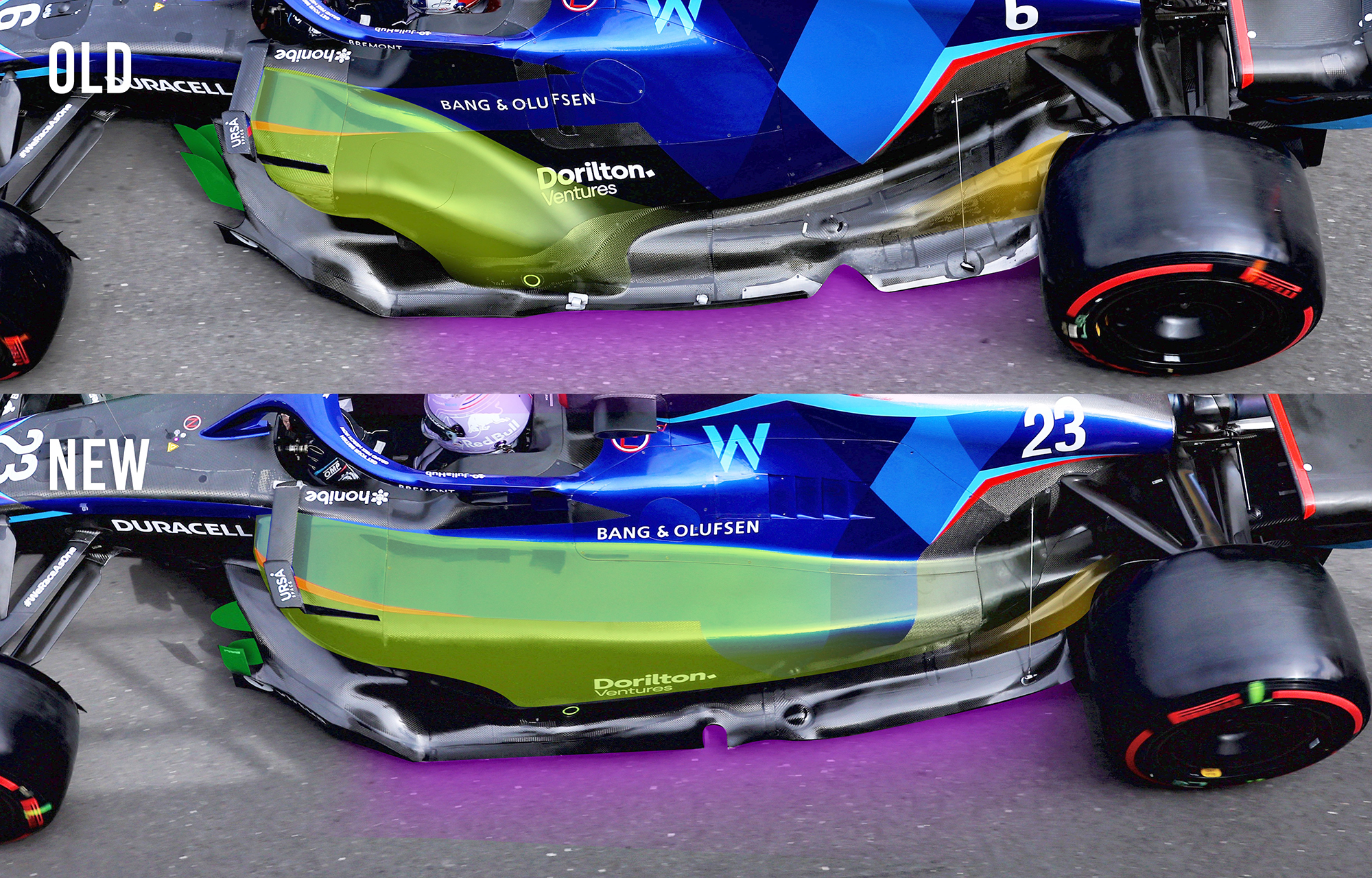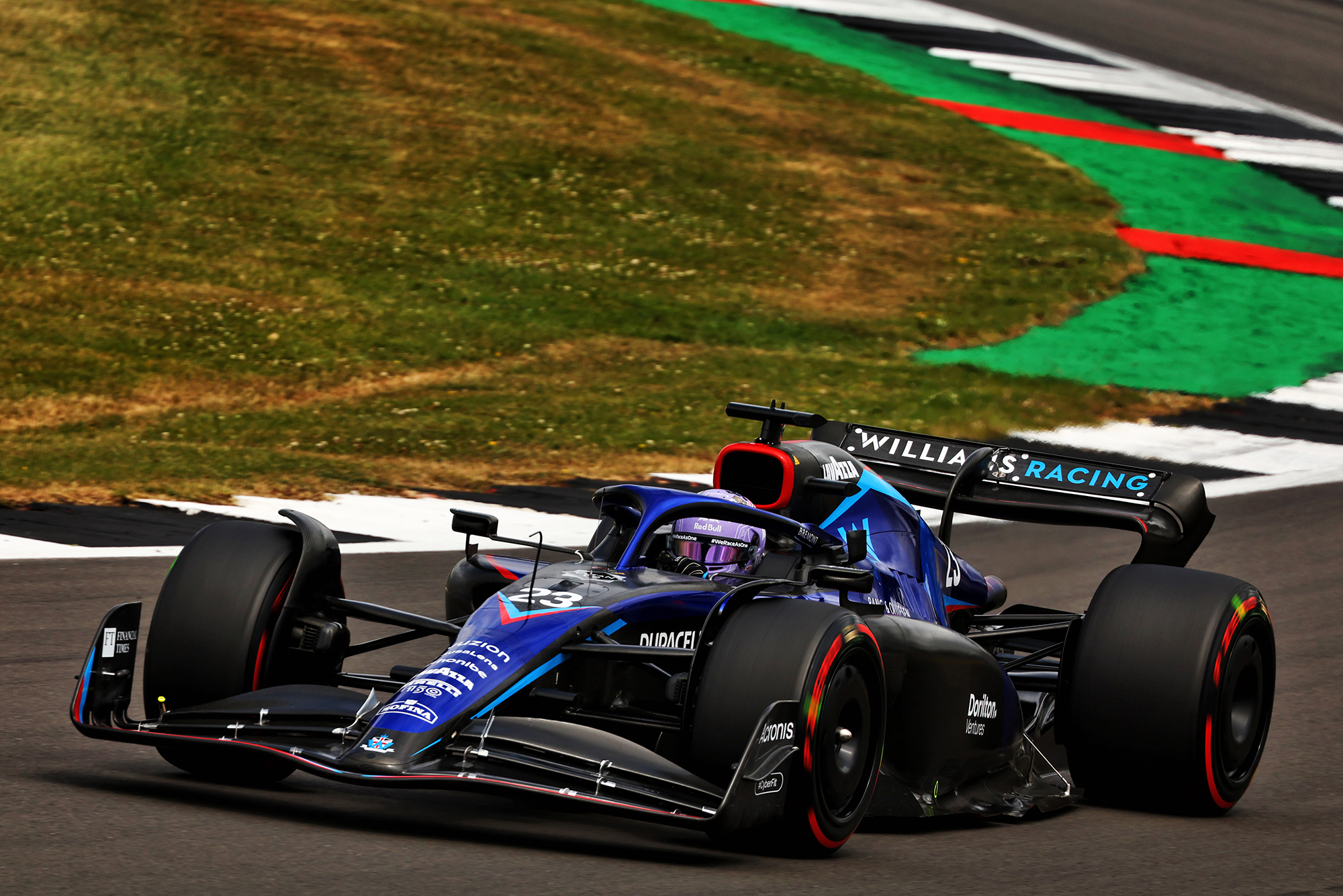Up Next

Williams’s initial interpretation of the major aero Formula 1 regulations reset of 2022 – with a version of the ‘zero’ sidepod concept and wide outer floor channels – was quickly found to be seriously wanting and the team effectively redesigned the whole sidepod area in time for the mid-season British Grand Prix.
The resultant revised car looked more conventional with its wider sidepods with a frontal undercut, more in line with the appearance of the Alpine or Red Bull.

“That original design was about feeding high-energy airflow to rear corner and across the top of the sidepod down a big ramp,” explained Williams’s head of vehicle performance Dave Robson at the end of last year.
“But with a better understanding of how that whole corner area – with the winglet on the brake duct, the floor and air being fed to it, how that was all going to work as a system – we made the upgrade.
“We saw there was opportunity to do something better – not just short-term better but something with more potential going forwards – and hence that’s what we did.”
Williams would have liked to have done more, but was restricted by cost.
Ideally, the sidepods would have been more tightly sculpted to better feed that sensitive area around the rear brake duct, but the existing cooling radiator had to be retained. With that limitation removed for this year’s car, that’s where the biggest visual change will be seen when the actual FW45 appears for the first time next Monday.
“The whole car [FW45] is an evolution in terms of its physical appearance,” said Robson.
“The most obvious change from last year is around the sidepod shape, which is something we started to progress on partway through last year, from Silverstone.
“But we couldn’t do all the changes we really wanted to, where the actual coolers were. Now we’ve had the opportunity to rework that a bit.”

The upgraded car of last year was measurably faster than the original but a key limitation remained in combining a good downforce level with a consistent through-corner balance.
This refers not just to the differences in balance between entry, mid corner and exit but also differences in those traits according to the speed of the corner.
This was a key area of difficulty created by the new regulations and their aerodynamically powerful underfloors. As the downforce squares with speed, so the balance change can be significant through the speed range if there is an imbalance between the downforce acting on the front and rear axle.
It’s a trait that Alex Albon was having to work with even in the upgraded car which, if anything, was even more sensitive than the original even though its downforce was greater.
Asked if he feels there has been progress with this based on what he has felt of FW45 on the sim, Albon replied: “Yes, we have [made progress]. It’s difficult though because with the regulation change it’s obviously affected… teams have lost a lot of downforce which they have been building so it’s a little bit of a reset.
“But since the Silverstone car came last June we’ve been tracking whether we’re going in the right direction, making sure we track the aero map every two or so weeks and seeing how it’s going.
“For now it feels good. I don’t want to say it’s all fixed because inevitably cars carry a characteristic and there’s an inherent DNA in the car so sometimes it’s not that easy to change the whole philosophy of the car. But I think we are making inroads.
“Let’s see. It could be that the correlation’s not that great and we’re not where we want to be.”






